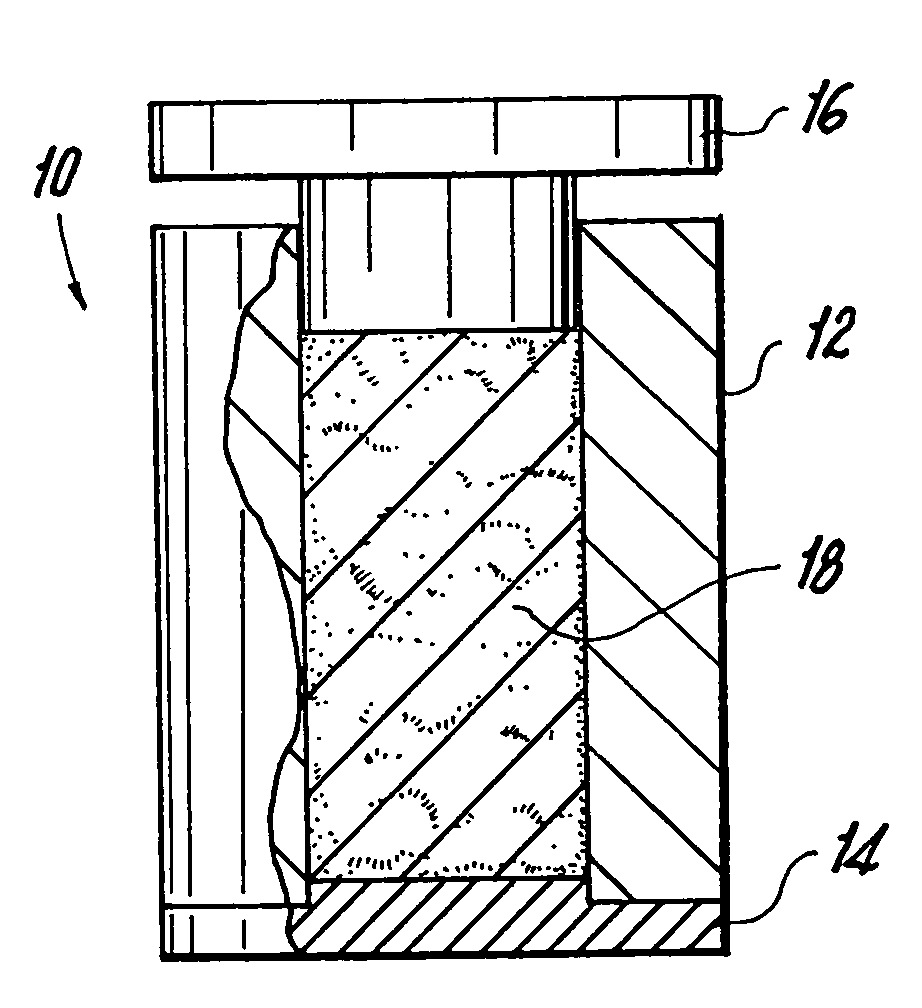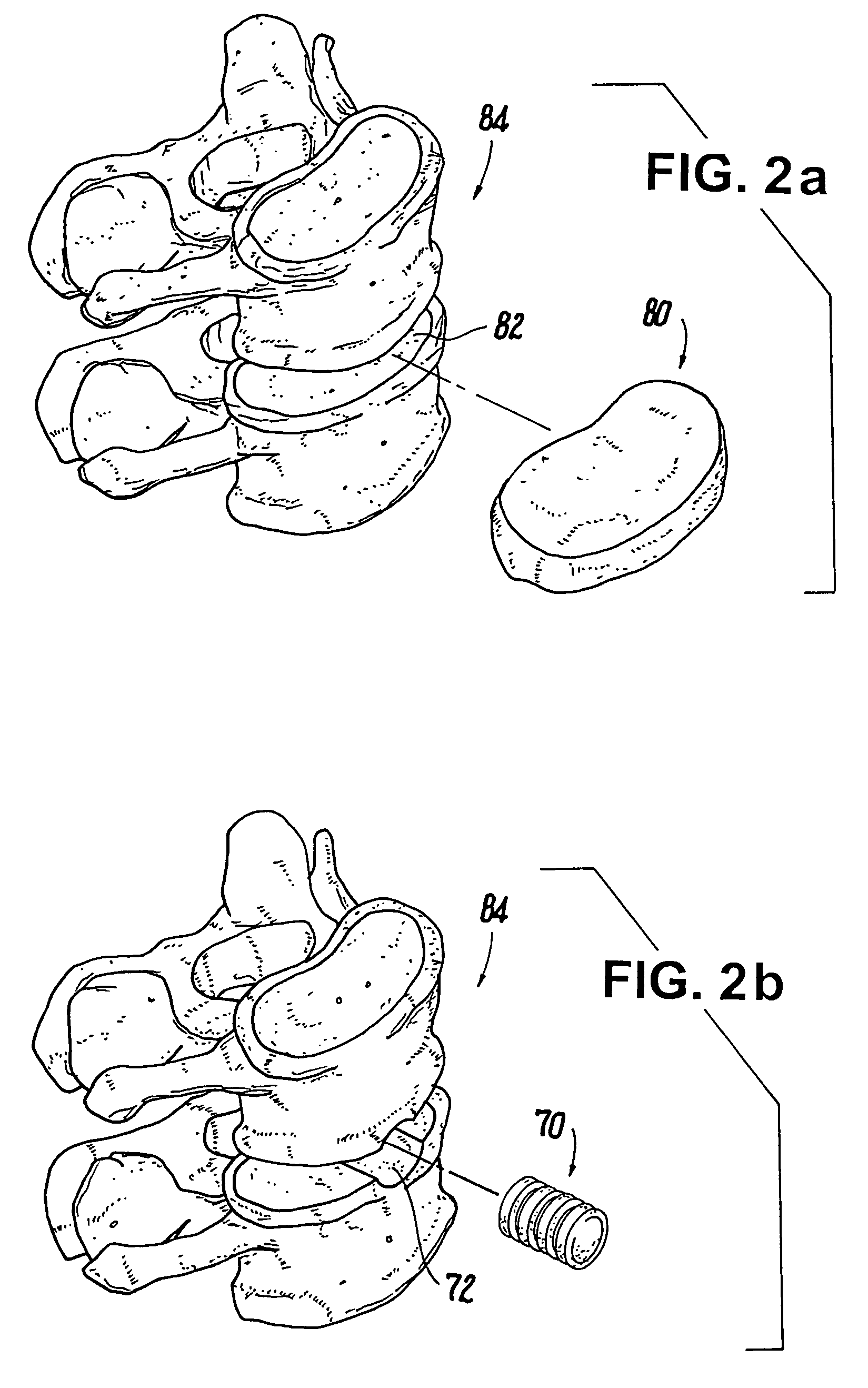Methods of making shaped load-bearing osteoimplant
a technology of osteoimplant and load-bearing bone, which is applied in the field of osteoimplant, can solve the problems of inability to achieve certain clinically desirable shapes and sizes of grafts through cutting and shaping processes, and many structural allografts are never fully incorporated by remodeling and replacement with host tissue, and achieve the effect of sufficient strength
- Summary
- Abstract
- Description
- Claims
- Application Information
AI Technical Summary
Benefits of technology
Problems solved by technology
Method used
Image
Examples
example 1
[0150]Elongate bone particles were prepared using a milling machine. Half of the volume of the particles was fully demineralized using two changes of 0.6N HCl acid. The nondemineralized and the fully demineralized particles were then combined together in an aqueous solution containing glycerol and allowed to soak for 4-12 hours at room temperature. The particles were then removed from the solution by straining, and placed into a 28 mm diameter cylindrical press-mold while still moist. The particles were pressed to 10,000 psi for 15 minutes. The resulting compressed pellet was heated in situ in an oven for 4 hours at 45° C. The osteoimplant was then frozen in a −70° C. freezer (1.5 hours), and freeze-dried overnight, after which it was removed from the mold. The bulk density of the osteoimplant produced was 1.34 g / cm3. The height of the osteoimplant was 29 mm. The wet compressive strength of the osteoimplant exceeded 3 MPa.
example 2
[0151]The procedure of Example 1 was used except the ratio of fully demineralized to nondemineralized bone particles was 2:1, the pellet was heated in situ in an oven for 4 hours at 40° C. and the pressure was 2,500 psi. The resulting compressed pellet was cut into two portions and each portion was treated with crosslinking agent: 10% neutral buffered formalin (both dipped and in vapor phase) and 4% Denacol EX313 (a polyepoxy-ether compound available from Nagase America Corp., New York, N.Y.), respectively. In each case, the resulting osteoimplant swelled a little and became stiff, and resistant to manual pressure. The bulk density of the osteoimplant produced was 1.2 g / cm3. The wet compressive strength of the osteoimplant exceeded 3 MPa.
example 3
[0152]The procedure of Example 1 was followed except that all of the particles were partially demineralized by using 225 ml of 0.6N HCl and allowing the acid to react to depletion. Additionally, the mold was hexagonal in configuration (with each side of the hexagon measuring 18 mm). After completing the freeze-drying step, the resulting osteoimplant was placed in a bath of 10% neutral buffered formalin and the exposed collagen of the partially demineralized bone particles was allowed to cross-link for 48 hours. The resulting dry osteoimplant was tested mechanically and was found to possess a dry compressive strength of about 85 MPa. The bulk density of the osteoimplant was 1.05 g / cm3.
PUM
| Property | Measurement | Unit |
|---|---|---|
| density | aaaaa | aaaaa |
| wet compressive strength | aaaaa | aaaaa |
| median length | aaaaa | aaaaa |
Abstract
Description
Claims
Application Information
 Login to View More
Login to View More - R&D
- Intellectual Property
- Life Sciences
- Materials
- Tech Scout
- Unparalleled Data Quality
- Higher Quality Content
- 60% Fewer Hallucinations
Browse by: Latest US Patents, China's latest patents, Technical Efficacy Thesaurus, Application Domain, Technology Topic, Popular Technical Reports.
© 2025 PatSnap. All rights reserved.Legal|Privacy policy|Modern Slavery Act Transparency Statement|Sitemap|About US| Contact US: help@patsnap.com



